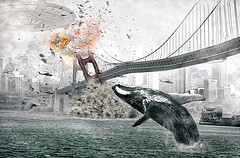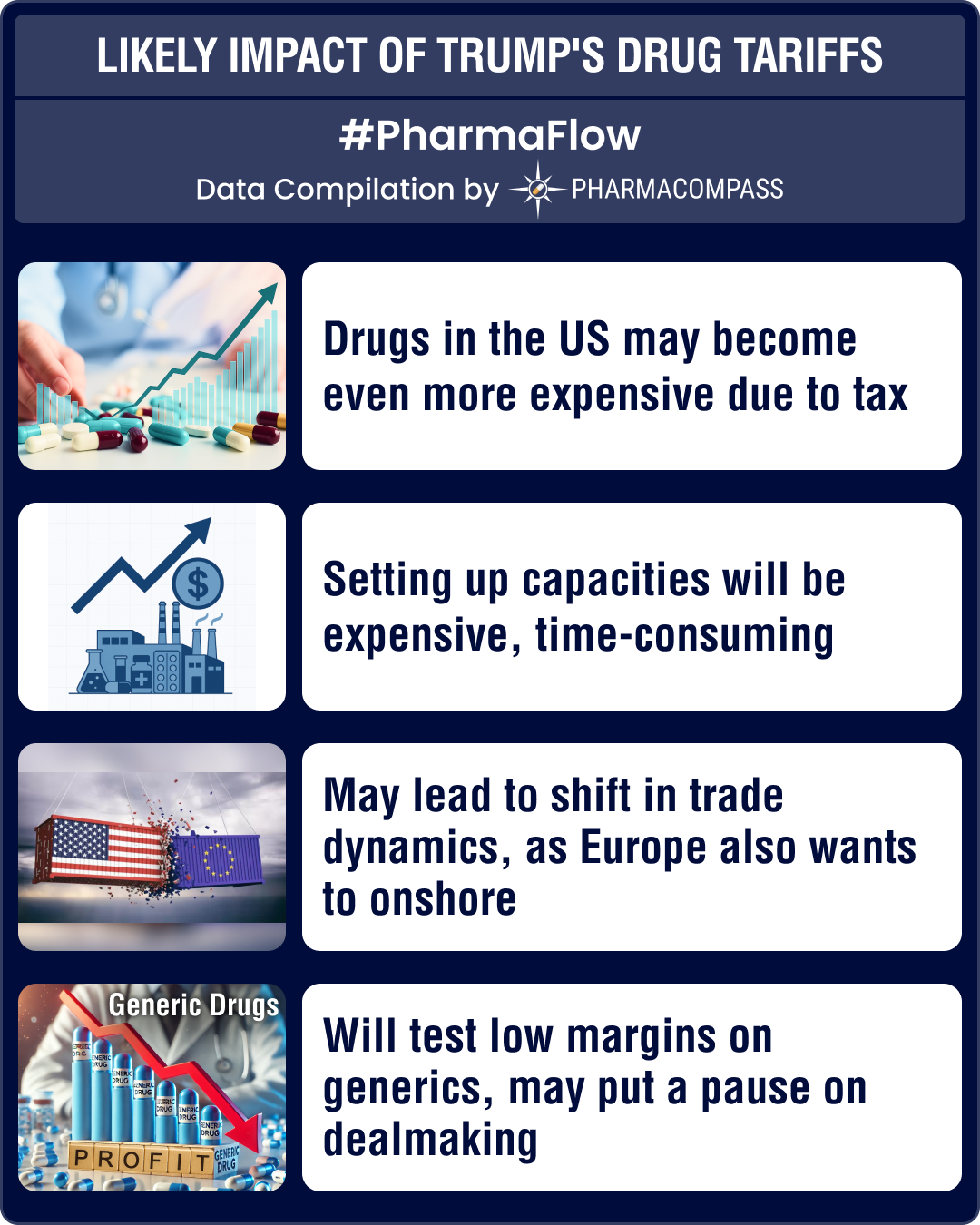
We always knew math was fuzzy, but never imagined addition could get so complicated.
A recent publication on 2014 Global Prescription Medication Statistics listed the top pharmaceutical corporations by revenues, the best selling products along with the top therapy areas.
The list, based on data published by IMS Health, caught us by surprise since a previous publication by FiercePharma had a completely different order when ranking the top 15 pharmaceutical companies.
As the difference in revenues of the top-10 companies was in excess of $60 billion and IMS Health’s data is an industry standard for decision making, we dug deeper to analyze the correlation between the information in the annual reports and IMS Health’s statistics.
Which pharmaceutical company is the largest?
Simply put, the answer is, ‘it depends’ on how you define a pharmaceutical company.
Should divisions like diagnostics, animal health, vaccines, consumer health be counted when determining the size of a pharmaceutical company?
FiercePharma, in their analysis, used the total revenue of all divisions of the organizations to determine the largest organization; in their case it is Johnson & Johnson.
IMS determines their numbers by measuring “prescription sales and dispensing” and hence, excludes divisions like diagnostics, consumer health and animal health, making Novartis the largest company.
As currency exchange rate fluctuations have their own, big role, in determining the size of organizations, we believed it would be best to share the revenues, as presented, so that you can draw your own conclusions.
Table 1/ Sales comparison for top pharmaceutical companies in 2014 from different sources (IMS, Fierce Pharma and Annual Reports)
|
Big Pharma |
IMS Rank |
IMS Sales (US $Mn) |
Fierce Pharma Rank |
Fierce Pharma Sales (US $Mn) |
Group Sales based on the Annual Report (Currency as reported, Mn)
|
|
1 |
51,307 |
2 |
57,996 |
USD 57,996 |
|
|
2 |
44,929 |
4 |
49,605 |
USD 49,605 |
|
|
3 |
40,037 |
5 |
43,070 |
Euro 33,770 |
|
|
4 |
37,607 |
3 |
49,866 |
CHF 49,866 |
|
|
5 |
36,550 |
6 |
42,237 |
USD 42,237 |
|
|
6 |
36,422 |
1 |
74,331 |
USD 74,331 |
|
|
7 |
33,313 |
8 |
26,095 |
USD 26,095 |
|
|
8 |
31,470 |
7 |
37,960 |
GBP 23,006 |
|
|
9 |
26,001 |
11 |
20,272 |
USD 20,272 |
|
|
10 |
23,673 |
10 |
24,474 |
USD 24,890 |
|
|
11 |
20,473 |
12 |
20,063 |
USD 20,063 |
|
|
12 |
19,909 |
14 |
19,615 |
USD 19,615 |
|
|
13 |
19,049 |
13 |
19,960 |
USD 19,960 |
|
|
14 |
18,347 |
9 |
25,470 |
Euro 42,239 |
|
|
Not in Top 20 |
15 |
15,879 |
USD 15,879 |
||
NB: Mn is million
Click here to access and download all the 2014 data (Excel version available) for FREE!
Since each group has multiple divisions, we further split the sales for you to brainstorm:
Table 2/ Sales comparison of the different divisions of top pharmaceutical companies in 2014 (Annual Reports in Mn)
|
Big Pharma |
Pharma Division |
Vaccine Division |
Generics |
Consumer Health |
Other Divisions |
Medical Devices/ Diagnostics Division |
Animal Health Division |
Divestures/ Other adjustments |
|
USD 31,791 |
Sandoz USD 9,562 |
Alcon USD 10,827 |
USD 5,816 |
|||||
|
USD 45,708 |
USD 3,446 |
USD 451 |
||||||
|
Euro 22,578 |
Euro 3,974 |
Euro 1,805 |
Euro 3,337 |
Euro 2,076 |
||||
|
CHF 38,969 |
CHF 10,897 |
|||||||
|
USD 30,740 |
USD 5,302 |
USD 6,195 |
||||||
|
USD 32,313 |
USD 14,496 |
USD 27,522 |
||||||
|
USD 26,095 |
||||||||
|
GBP 18,670 |
GBP 4,336 |
|||||||
|
USD 10,458 |
USD 9,814 |
|||||||
|
USD 24,474 |
USD 416 |
|||||||
|
USD 19,327 |
USD 736 |
|||||||
|
USD 16,481 |
USD 788 |
USD 2,346 |
||||||
|
USD 19,960 |
||||||||
|
Euro 12,052 |
Euro 7,923 |
Euro 22,264 |
||||||
|
USD 15,879 |
Click here to access and download all the 2014 data (Excel version available) for FREE!
Not sure that it adds any extra clarity on what should define a global pharmaceutical company…
Since the various divisions make companies complicated to assess, what about product sales?
The good news is that we have a winner!
Humira®, AbbVie’s monoclonal antibody Adalimumab, used to treat rheumatoid and other types of arthritis, is the highest selling product globally. IMS reported Humira’s annual sales for 2014 at $11,844 million, while AbbVie mentions their sales of Humira at $12,543 million, the difference: a mere $700 million! However, with IMS gathering data across various points of the supply chain, and the recent volatility of the currency markets, we believe that a difference of 5.5% of total sales is within range of reason.
Unfortunately, things stopped making sense the moment we reached the number-two product on the IMS list. Lantus®, Sanofi’s insulin glargine, recorded sales of Euro 6,344 million (based on Sanofi’s 2014 annual report), while IMS mentions Lantus sales were $10,331 million last year. In addition, Sanofi has an 11% growth rate reported while IMS indicates a growth of 30%.
So unless the Euro/Dollar exchange rate moves back towards the 1.5 range, there seems to be a serious difference in the way the product sales are calculated by companies and by IMS.
Using information available in the annual reports and other company declarations, we attempted to compare IMS’ Top 20 Global Products 2014 with available public information, to only find more complications!
Table 3/ Sales comparison of the top pharmaceutical products in 2014 (IMS vs Annual Reports)
|
Products |
IMS Rank |
IMS Sales (US $Mn) |
Annual Reports Sales (US $Mn) |
Pharma Compass Rank |
Big Pharma |
Currency |
Annual Reports Sales in Mn |
Marketing Partner |
Marketing Partner Annual Report Sales (US $Mn) |
|
Humira® |
1 |
11,844 |
12,543 |
1 |
USD |
12,543 |
|||
|
2 |
10,331 |
7,676 |
5 |
Euro |
6,344 |
||||
|
3 |
9,375 |
10,283 |
2 |
USD |
10,283 |
||||
|
4 |
9,285 |
7,556 |
6 |
USD |
2,020 |
5,536 |
|||
|
Enbrel® |
5 |
8,707 |
8,538 |
4 |
USD |
4,688 |
3,850 |
||
|
6 |
8,652 |
6,589 |
8 |
GBP |
4,229 |
||||
|
7 |
8,473 |
5,512 |
11 |
USD |
5,512 |
||||
|
Remicade® |
8 |
8,097 |
9,880 |
3 |
USD |
6,868 |
2,372 |
||
|
640 |
|||||||||
|
9 |
7,681 |
3,655 |
19 |
USD |
3,655 |
||||
|
Mabthera® |
10 |
6,552 |
6,936 |
7 |
CHF |
5,603 |
1,305 |
||
|
Avastin® |
11 |
6,070 |
6,449 |
9 |
CHF |
6,417 |
|||
|
12 |
6,002 |
5,168 |
12 |
USD |
5,168 |
||||
|
Herceptin® |
13 |
5,564 |
6,306 |
10 |
CHF |
6,275 |
|||
|
14 |
5,483 |
3,917 |
17 |
Euro |
3,237 |
||||
|
15 |
4,991 |
3,931 |
16 |
USD |
3,931 |
||||
|
16 |
4,788 |
4,237 |
14 |
USD |
4,237 |
||||
|
17 |
4,718 |
2,835 |
20 |
DKK |
17,449 |
||||
|
18 |
4,627 |
4,596 |
13 |
USD |
4,596 |
||||
|
19 |
4,535 |
3,801 |
18 |
USD |
3,801 |
||||
|
Lucentis® |
20 |
4,437 |
4,152 |
15 |
USD |
2,441 |
1,711 |
Click here to access and download all the 2014 data (Excel version available) for FREE!
It’s clear that the methods used to determine product sales are considerably different between IMS and the pharmaceutical companies, however there is a range of consistency as well. How accurate is each information really depends on the analyst’s point of view.
Our take:
With over $350 billion in total sales, we have provided our raw data for your review since we are certain that there are opportunities worth capitalizing upon and others, which may not be worthwhile to pursue.
While the assessment of pharmaceutical sales is far more complicated than what we had originally imaged, the focus of Big Pharma on small molecules is on Hepatitis C drugs (Sofosbuvir, Olysio, AbbVie Hep C), blood thinners, Eliquis® (Apixaban), Xarelto®(Rivaroxaban) and of course ‘tinib’ cancer treatments.
Table 4/ Growth of ‘tinib’ cancer treatments in 2014 (Annual Reports)
|
Products |
Big Pharma |
Sales (US $Mn) 2013 |
Sales (US $Mn) 2014 |
Growth (%) |
|
(now AbbVie) |
14 |
492 |
3414% |
|
|
1280 |
1493 |
17% |
||
|
10 |
68 |
580% |
||
|
1266 |
1529 |
21% |
||
|
163 |
279 |
71% |
||
|
Not launched |
31 |
|||
|
1204 |
1174 |
-2% |
||
|
282 |
438 |
55% |
||
|
319 |
410 |
29% |
||
|
114 |
308 |
170% |
Click here to access and download all the 2014 data (Excel version available) for FREE!
However, Big Pharma is now all about biologics.
IMS’s data indicates that the top 10 products have only 5 biologics, while our calculations have 8 out of the top 10 products as biologics. The future strategy is best summed up by the statement in Bristol-Myers Squibb’s annual report “Just 5 years ago, we had about 40% of our development projects in biologics. If we look forward 3-5 years, we believe that number could potentially grow to about 75%”.
The barriers of entry for generic competition and potential windfalls have made rivals come together to co-market Synagis® (AbbVie & AstraZeneca), Remicade® (Johnson & Johnson, Merck and Tanabe), Xolair® and Lucentis® (Roche & Novartis).
Our pharmaceutical whisper (phisper): join the bio-age or bio-degrade!
The PharmaCompass Newsletter – Sign Up, Stay Ahead
Feedback, help us to improve. Click here
Image Credit : When the Whales Go Home by David Blackwell is licensed under CC BY 2.0
“ The article is based on the information available in public and which the author believes to be true. The author is not disseminating any information, which the author believes or knows, is confidential or in conflict with the privacy of any person. The views expressed or information supplied through this article is mere opinion and observation of the author. The author does not intend to defame, insult or, cause loss or damage to anyone, in any manner, through this article.”






